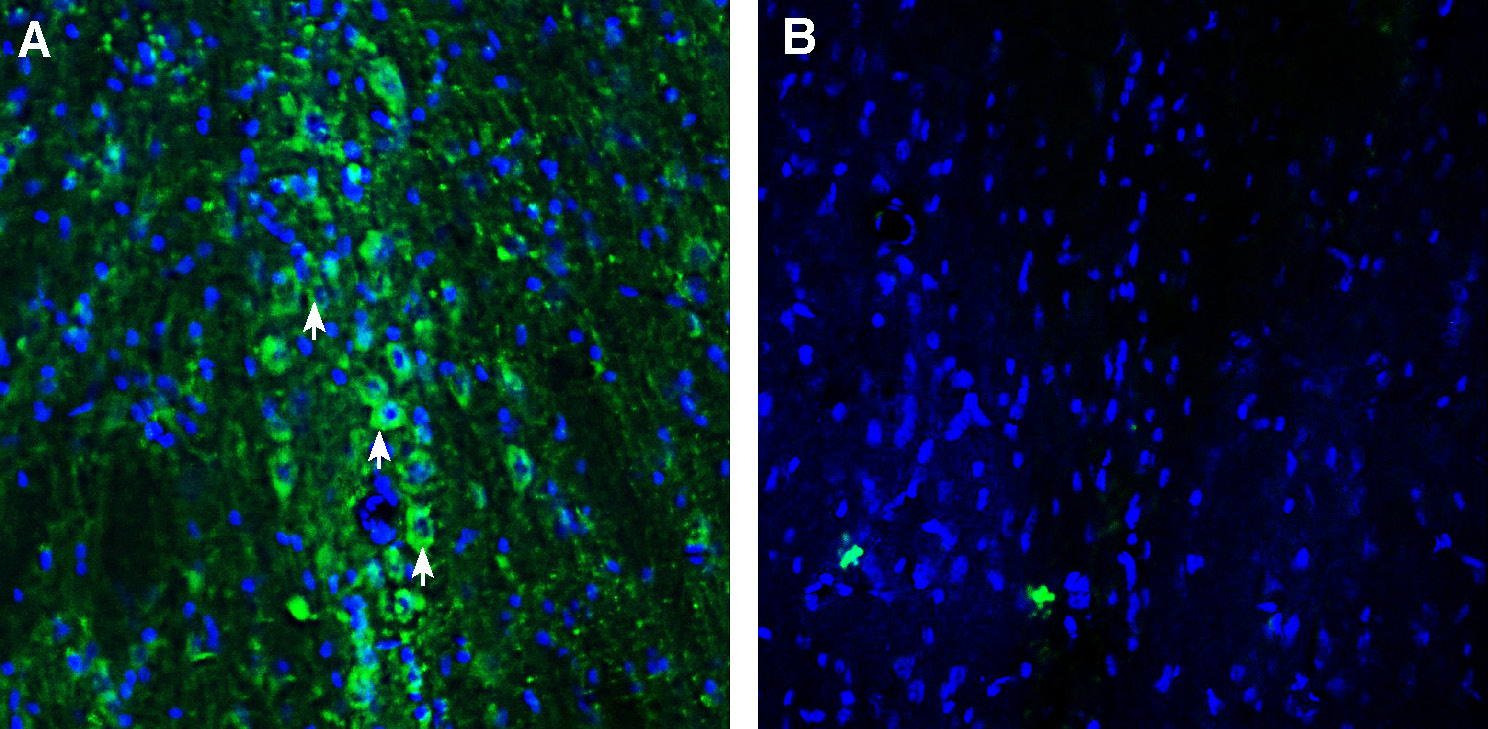Overview
- Peptide (CN)LTADEDTGMKLNPS, corresponding to amino acid residues 321 - 334 of mouse SLC22A2 (Accession O70577). Intracellular, 3rd loop.

SLC22A2 (OCT2) Blocking Peptide (#BLP-CT020)
 Western blot analysis of mouse kidney lysates (lanes 1 and 3) and rat kidney lysates (lanes 2 and 4):1-2. Anti-SLC22A2 (OCT2) Antibody (#ACT-020), (1:200).
Western blot analysis of mouse kidney lysates (lanes 1 and 3) and rat kidney lysates (lanes 2 and 4):1-2. Anti-SLC22A2 (OCT2) Antibody (#ACT-020), (1:200).
3-4. Anti-SLC22A2 (OCT2) Antibody, preincubated with SLC22A2 (OCT2) Blocking Peptide (BLP-CT020). Western blot analysis of rat brain lysates (lanes 1 and 3) and mouse brain lysates (lanes 2 and 4):1-2. Anti-SLC22A2 (OCT2) Antibody (#ACT-020), (1:200).
Western blot analysis of rat brain lysates (lanes 1 and 3) and mouse brain lysates (lanes 2 and 4):1-2. Anti-SLC22A2 (OCT2) Antibody (#ACT-020), (1:200).
3-4. Anti-SLC22A2 (OCT2) Antibody, preincubated with SLC22A2 (OCT2) Blocking Peptide (BLP-CT020).
 Expression of OCT2 in rat medial septum nucleus.Immunohistochemical staining of perfusion-fixed frozen rat brain sections using Anti-SLC22A2 (OCT2) Antibody (#ACT-020), (1:200), followed by goat anti-rabbit-AlexaFluor-488. A. OCT2 immunoreactivity (green) appears in neurons (arrows). B. Pre-incubation of the antibody with SLC22A2 (OCT2) Blocking Peptide (BLP-CT020), suppressed staining. Cell nuclei are stained with DAPI (blue).
Expression of OCT2 in rat medial septum nucleus.Immunohistochemical staining of perfusion-fixed frozen rat brain sections using Anti-SLC22A2 (OCT2) Antibody (#ACT-020), (1:200), followed by goat anti-rabbit-AlexaFluor-488. A. OCT2 immunoreactivity (green) appears in neurons (arrows). B. Pre-incubation of the antibody with SLC22A2 (OCT2) Blocking Peptide (BLP-CT020), suppressed staining. Cell nuclei are stained with DAPI (blue). Expression of OCT2 in mouse kidney.Immunohistochemical staining of formalin-fixed paraffin-embedded (FFPE) mouse kidney sections, with Anti-SLC22A2 (OCT2) Antibody (#ACT-020), (1:100), followed by goat anti-rabbit-AlexaFluor-647. A. OCT2 immunoreactivity (red) appears in proximal tubules (arrows). B. Pre-incubation of the antibody with SLC22A2 (OCT2) Blocking Peptide (BLP-CT020), suppressed staining. Cell nuclei are stained with DAPI (blue). Heat-induced epitope retrieval was done with citrate buffer, pH6.
Expression of OCT2 in mouse kidney.Immunohistochemical staining of formalin-fixed paraffin-embedded (FFPE) mouse kidney sections, with Anti-SLC22A2 (OCT2) Antibody (#ACT-020), (1:100), followed by goat anti-rabbit-AlexaFluor-647. A. OCT2 immunoreactivity (red) appears in proximal tubules (arrows). B. Pre-incubation of the antibody with SLC22A2 (OCT2) Blocking Peptide (BLP-CT020), suppressed staining. Cell nuclei are stained with DAPI (blue). Heat-induced epitope retrieval was done with citrate buffer, pH6.
- Nigam, S.K. (2018) Annu Rev Pharmacol Toxicol. 58: 663.
- Hall, M.D., et al. (2008) Annu Rev Pharmacol Toxicol, 48: 495.
- Koepsell, H. and H. Endou. (2004) Pflugers Arch, 447: 666.
- Koepsell, H., et al. (2003). Rev Physiol Biochem Pharmacol, 150: 36.
- Yonezawa, A., et al. (2005) Biochem Pharmacol, 70: 1823.
- Koepsell, H. et.al. (2020) Pharmacol. Rev. 72, 253.
Organic cation transporters are members of the SLC22A superfamily. These transporters are polyspecific and are involved in the absorption and excretion of various endogenous and exogenous compounds1. The family consists of 18 genes and includes the organic cation transporters (OCTs), organic cation/carnitine transporters (OCTNs), and organic anion transporters (OATs)1-3.
Most family members share a common membrane topology consisting of a predicted 12 α-helical transmembrane domains and two hydrophilic loops2,4. Although they share a common structure, the transporters in the SLC22A family show differential tissue distribution. The genes encoding the three organic cation transporters (SLC22A1-3) are all located in a cluster on chromosome 62-4.
Organic cation transporter 2 (OCT2) was first identified in the rat in 1996. It is primarily located on the basolateral surface of renal proximal tubules, particularly on the S2 and S3 segments and also expressed in brain.
OCT2 mediates the uptake from circulation of several endogenous compounds like creatinine, choline and norepinephrine and also exogenous ones, that include commonly prescribed drugs like the antineoplastic drug cisplatin and the antidiabetic Metformin 5,6.
Application key:
Species reactivity key:
Anti-SLC22A2 (OCT2) Antibody (#ACT-020) is a highly specific antibody directed against an epitope of the mouse protein. The antibody can be used in western blot and immunohistochemistry applications. It has been designed to recognize SLC22A2 from rat and mouse samples. The antibody won’t recognize human OCT2.
